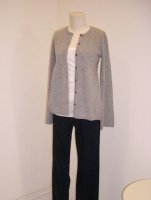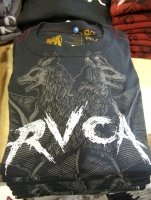Westwood: Fashion Retail Growing on the Westside
Five years ago, Lindsey Hassen was a frequent visitor to the movie theaters and cafes of Los Angeles’ Westwood neighborhood. But it was no place for fashion.
In 2007, Hassen is a manager for Westwood store Monica’s on Broxton at 1009 Broxton Ave. She is hoping the store will turn the home turf of the University of California, Los Angeles into a fashion town.
With more than 25,000 undergraduates attending UCLA, it would not take a proverbial genius to consider Westwood a good place to open a fashion boutique for young people.
However, the neighborhood did not offer much fashion retail, according to Hassen and other retailers in the neighborhood. Yet a few years ago, Westwood’s fashion landscape began to change.
Monica’s on Broxton opened in 2003. More than one year later, an Urban Outfitters store opened at 1100 Westwood Blvd. The debut of the Urban Outfitters store convinced novice retailer Sky Reynolds Brewer to take a gamble on Westwood. In late 2004, she opened her Skyla boutique at 1073 Broxton Ave.
Fashion became a stronger part of Broxton’s character when Ontario, Calif.–based surf, skate and fashion boutique Active opened a 6,500-square-foot store at 1083 Broxton Ave. in 2006.
Despite the growing ranks of fashion retailers, Westwood still has long-term problems. Street parking is famously frustrating. But the growing coterie of fashion boutiques might help change the perception that UCLA students do not shop in Westwood.
Active manager Bryan Neal said more than 70 percent of his clientele are UCLA students. Skyla’s Reynolds Brewer said that more than half of her shoppers are UCLA students. She hosts sorority shopping parties most months of the school year, and each event is typically attended by more than 125 people.
Other clients for fashion retailers include tourists staying at the nearby W Hotel at 930 Hilgard Ave., the Beverly Hills teen-agers who claim Westwood as their hangout, and office workers from UCLA and neighboring Wilshire Boulevard. Another important group is made up of the young mothers living in the wealthy surrounding communities of Bel-Air and Holmby Hills.
At Monica’s, students, moms and office workers are buying contemporary brands, including Ella Moss, Rebecca Taylor and True Religion. Ella Moss’ stripe prints sell well, according to Hassen. Moss’ price points range from $60 to $180.
The long-popular “Joey” jean by True Religion is a top seller at Monica’s. True Religion’s price points range from $170 to $300. Swing coats by Rebecca Taylor, retailing for $430, also sell well at the boutique.
At Skyla, the students and young moms are buying T-shirts produced by Los Angeles–based Junk Food, with price points ranging from $22 to $30. “We sell them by the bucket loads,” Skyla manager Morgan Smith said of Junk Food. The “Skyline Drive” peg-leg jean by Paige is selling well at Skyla. It retails for $165 there.
The boutique also has been doing well with the baby doll–shaped cashmere cardigan produced by L.A. Made, priced at $165.
UCLA’s sneaker-obsessed students are making Nike SB footwear a top retail choice at Active. Price points for these shoes range from $75 to $125. Active’s selfnamed private label is popular. The label’s “Ghostdrop” sweater retails for $69.99.
Active aficionados’ favorite T-shirts are made by labels RVCA and Grn Apple Tree. Price points for RVCA T-shirts typically run from $25 to $30. Grn Apple Tree’s “Salvation” T-shirt costs $31.
Despite the fashionable offerings at these boutiques, they still might have to fight to change Westwood’s fashion reputation. Jimmy Johenning, a 21-year-old student, grew up in Beverly Hills and hung out in Westwood as a teenager. Yet he and his friends never shopped in Westwood. “It was like shopping in a mall,” said Johenning. He said that he preferred to shop at Fred Segal, Barneys New York and The Closet.
But more fashion retail may have opportunities to set down stakes in Westwood, according to Skyla manager Smith. She was a 2006 graduate of UCLA and maintains that fashion is only beginning to make an impact in this neighborhood. “The needs of the students were not being met in Westwood when I was a student in 2002. Now you don’t have to jump on a bus to go shopping” she said.
























